
Hokusai’s Ghost stories, Part 1
Hyakumonogatari Kaidankai: A Gathering of One Hundred Supernatural Tales
Let us enter the spooky season with some Hyakumonogatari Kaidankai (百物語怪談会) which can be translated as : „A Gathering of One Hundred Supernatural Tales„. It is a buddhist-inspired game that was invented during the Edo-Period in Japan. The exact origins are unknown: It could be invented by the Samurai as a test of courage and is traditionally played in the summer season.
Before you continue to read, please consider that I only have 0.01% knowledge about Japanese art, Japanese traditions, Japanese history, or language. I have to rely on websites in English and German that may or may not be 100% correct. If you find anything wrong just let me know. Also, there was very, very, very little useful information to find about Hokusai’s Hyaku monogatari so I mainly have to refer to what I find in Wikipedia and the other sparse sources. I am sorry about that and because of this I won’t attempt to interpret those pieces but I wanted to introduce you to those beautiful, fascinating and highly creative pieces.
The Great Wave off Kanagawa is the best known of Hokusai’s work in Europe but he created many more pieces which are equally beautiful. So with that in mind, let’s continue…
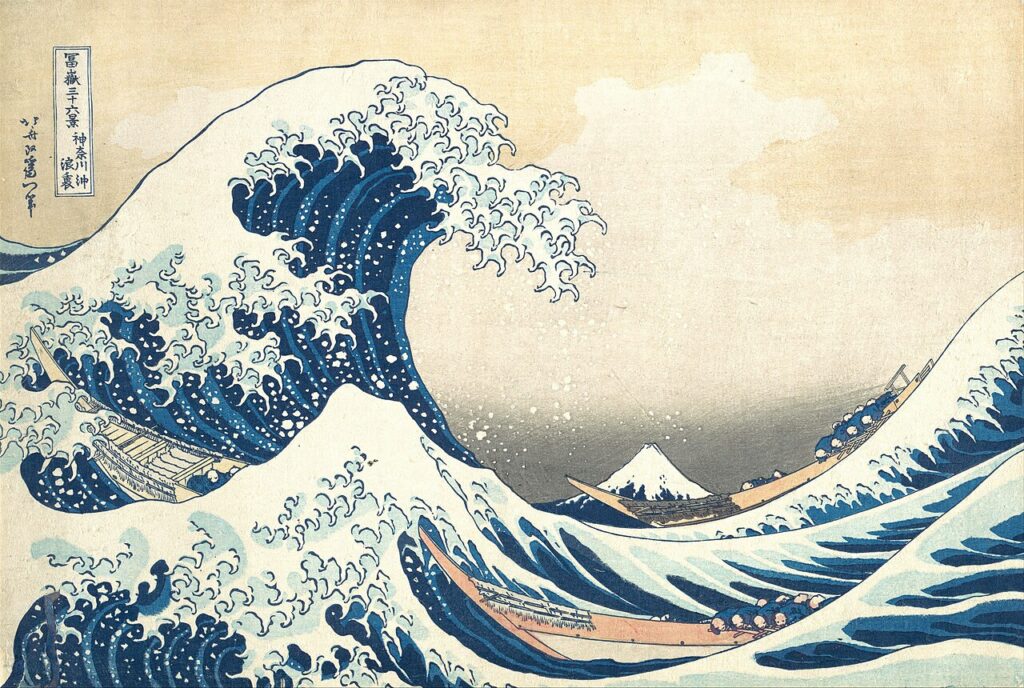
The tradition of Hyakumonogatari Kaidankai, the hundred ghost stories.
This tradition is a little bit like the customary creepy tales you tell when you are sitting around a bonfire somewhere lonely in the woods, roasting marshmallows. When it turns dark and starts to cool down, the bats are flying around, fog rises… you get the picture.
Wikipedia describes two ways the game can be played:
“The simplest form involves participants sitting in a circle in a room where 100 andon lamps or candles are lit. As participants take turns telling ghost stories and tales of the supernatural, a lantern is snuffed out after each story, causing the room to become darker and darker as the night and the game progress.

A second variation of the game integrates elements of a kimodameshi, the „test of courage“, into the game. Rather than one room, three connected rooms are used. In one of the end rooms, 99 andon lamps or candles are lit, and a small mirror positioned on a table. Guests gather in the other end room, with the 100th lamp. The center room remains empty and unlit. Ideally, the rooms are arranged in an „L“ shape so guests can see the light from the lantern room, but have no direct line of sight from the storytelling room into the lantern room, but this is not required. After each story, the storyteller takes the lamp, leaving the other participants in darkness as they pass through the center, empty room and into the lantern room. There, they extinguish one of the 99 lamps, look into the mirror, and then return to the group. The final lamp is extinguished after the final storyteller, or entire group, travels to the lantern room to snuff it out in front of the mirror.”
It is believed that this is a ritual method to summon spirit. That is why the 100th tale is often left untold, the 100th lamp still lit to prevent the ghosts from turning up. And yes, the complete game takes a long time and a lot of players. That is why there are shorter versions around. The stories that are told became known as kaidan.
One Hundred Ghost Stories – Hyaku monogatari
The Hakumonogatari Kaidankai inspired lots of artists, among them one particularly famous japanese artist: Master Katsushika Hokusai (1760 – 1849). He created five woodblock prints based on the traditional tales of the Yakumonogatari Kaidankai. We will never know why he created only five prints. I am a bit sad about it and would have loved to see more of them because they are fascinating. But it is what it is.
And because I am a little meanie…
… I will introduce Hokusai’s five prints in a later posting. The reason for this is, in my opinion, that this posting would be too long.
Of course, Hokusai was not the only one to create Illustrations of the popular ghost stories. In the past, the times before TV and radio and often before litteracy became common, telling tales and stories were a popular pasttime of people around the world and, of course, artists were inspired by it. Here are some examples you might like:

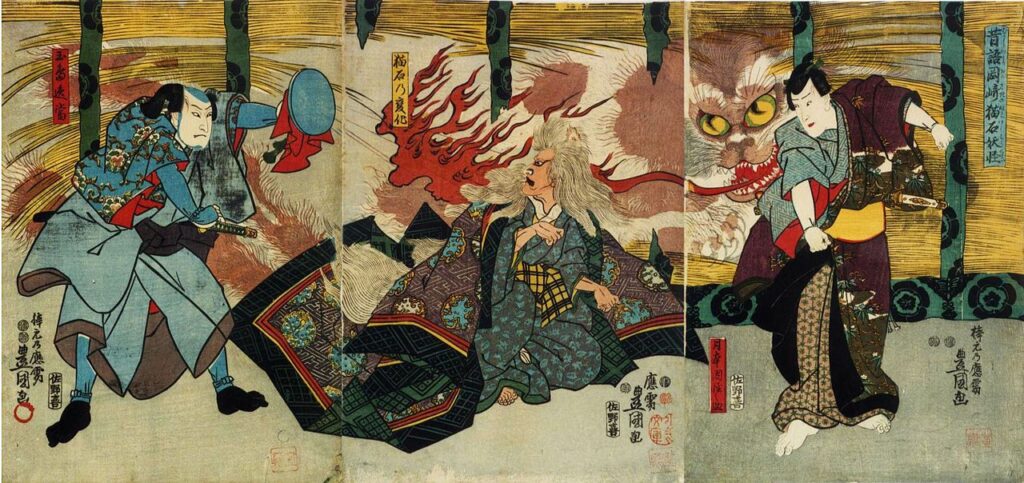
Deutsch: Farbholzschnitt, Kabuki-Triptychon von Utagawa Kunisada I (hier signiert mit Toyokuni): die Schauspieler (von links) Sawamura Sōjūrō V., Onoe Baijiu (Onoe Kikugorō III.), Ichimura Uzaemon XII., Stück „Onoe Kikugorō uichidai banashi“, aufgeführt am Ichimura Theater in 7/1847
Date 1847
Source Internet
Author
Utagawa Kunisada (1786–1865) wikidata:Q467427

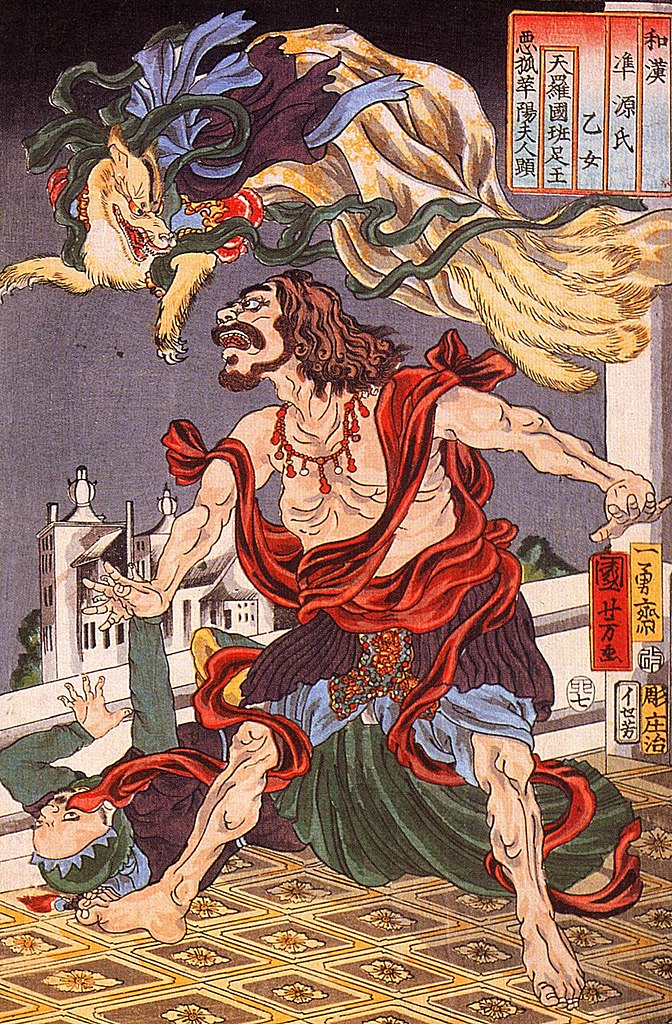
Prince Hanzoku terrorised by a nine-tailed fox

color woodcut, h 344mm × w 243mm Rijkymuseum
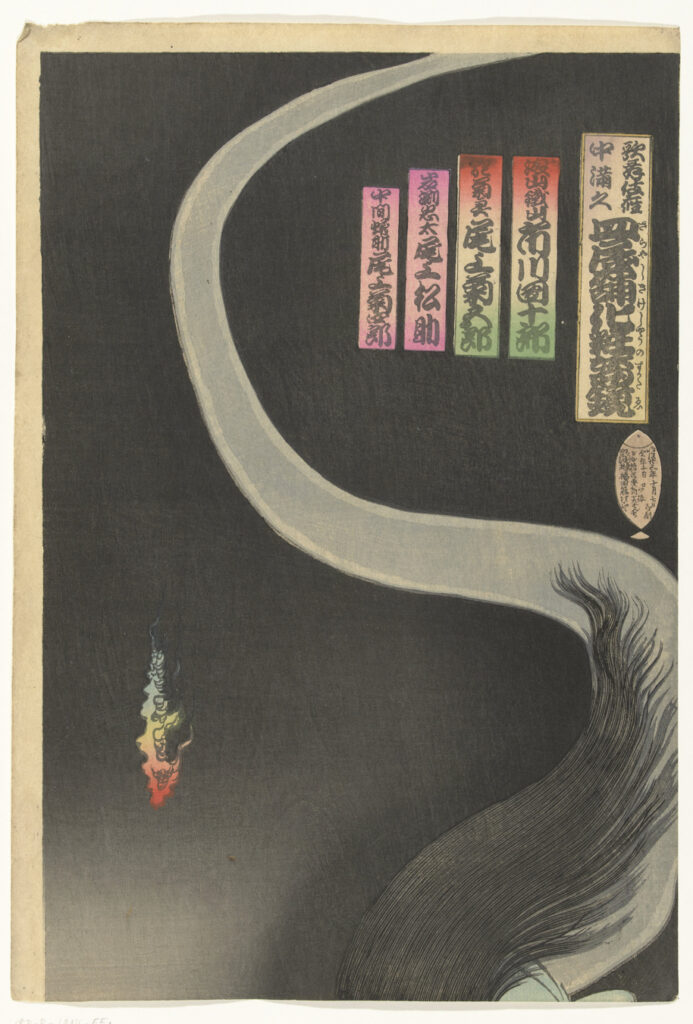
color woodcut, h 344mm × w 243mm Rijkymuseum, Detail
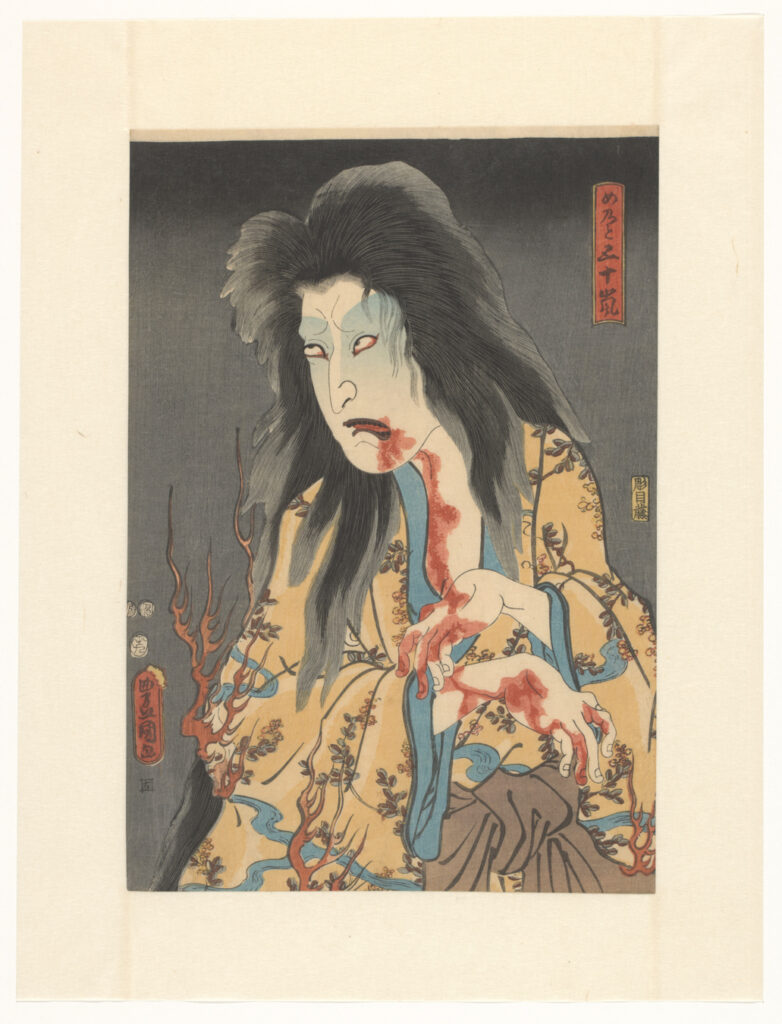
color woodcut, h 352mm × w 244mm. Rijksmuseum

color woodcut, h 344mm × w 243mm, Rijksmuseum
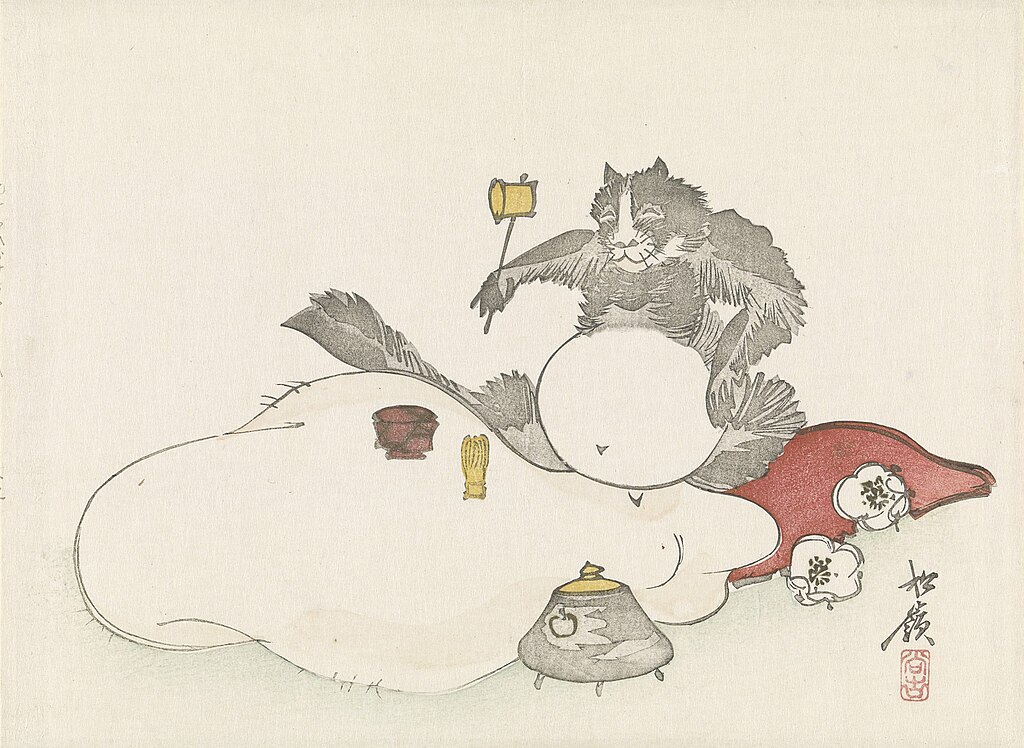
Tea ceremony of Tanuki
between 1840 and 1880
woodblock print on paper
Rijksmuseum



